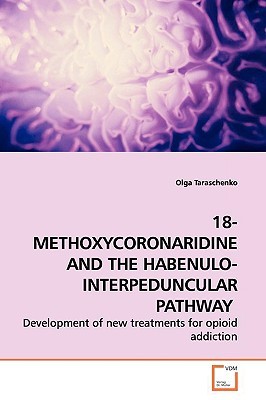
- We will send in 10–14 business days.
- Author: Olga Taraschenko
- Publisher: VDM Verlag
- ISBN-10: 3639137744
- ISBN-13: 9783639137743
- Format: 15.2 x 22.9 x 1.1 cm, softcover
- Language: English
- SAVE -10% with code: EXTRA
18-Methoxycoronaridine and the Habenulo-Interpeduncular Pathway (e-book) (used book) | bookbook.eu
Reviews
Description
Opioid addiction is a major public health problem and the need for new efficient therapies is immense.18-Methoxycoronaridine (18-MC), an iboga alkaloid congener, has been previously shown to reduce the self-administration of several drugs of abuse, including opioids.18-MC is a potent antagonist of alpha3beta4 nicotinic receptors and this now appears to be the primary mechanism of 18- MC's action in the brain. These nicotinic receptors are present in high densities in the nuclei of the habenulo-interpeduncular pathway but not in the mesolimbic pathway, known to be involved in drug addiction.This book describes the modulation of the mesolimbic pathway by the habenulo- interpeduncular pathway during chronic exposure to opioids and examines the role of 18-MC, nicotinic receptors and acetylcholine in such modulation.This book also illustrates the contribution of the latter pathway in 18-MC's ability to attenuate opioid withdrawal.The findings described in the book provide evidence that alpha3beta4 nicotinic receptors could be a novel target for anti-addictive therapies.The monograph should be useful to pharmacologists and behavioral neuroscientists.
EXTRA 10 % discount with code: EXTRA
The promotion ends in 16d.14:45:43
The discount code is valid when purchasing from 10 €. Discounts do not stack.
- Author: Olga Taraschenko
- Publisher: VDM Verlag
- ISBN-10: 3639137744
- ISBN-13: 9783639137743
- Format: 15.2 x 22.9 x 1.1 cm, softcover
- Language: English English
Opioid addiction is a major public health problem and the need for new efficient therapies is immense.18-Methoxycoronaridine (18-MC), an iboga alkaloid congener, has been previously shown to reduce the self-administration of several drugs of abuse, including opioids.18-MC is a potent antagonist of alpha3beta4 nicotinic receptors and this now appears to be the primary mechanism of 18- MC's action in the brain. These nicotinic receptors are present in high densities in the nuclei of the habenulo-interpeduncular pathway but not in the mesolimbic pathway, known to be involved in drug addiction.This book describes the modulation of the mesolimbic pathway by the habenulo- interpeduncular pathway during chronic exposure to opioids and examines the role of 18-MC, nicotinic receptors and acetylcholine in such modulation.This book also illustrates the contribution of the latter pathway in 18-MC's ability to attenuate opioid withdrawal.The findings described in the book provide evidence that alpha3beta4 nicotinic receptors could be a novel target for anti-addictive therapies.The monograph should be useful to pharmacologists and behavioral neuroscientists.


Reviews